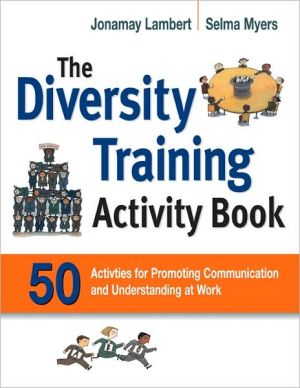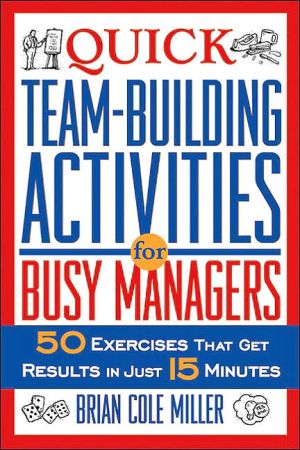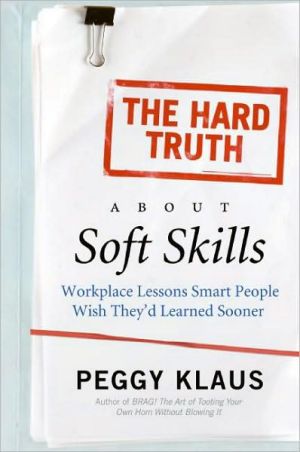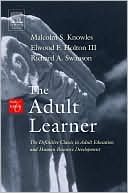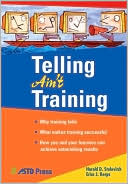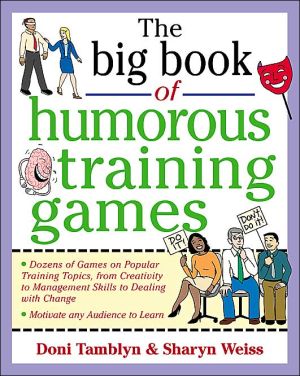Diversity Training Activity Book: 50 Activities for Promoting Communication and Understanding at Work
With our workforce becoming increasingly diverse, encouraging sensitivity and understanding in the workplace is a top priority for businesses everywhere. The Diversity Training Activity Book addresses such fundamental issues as change, communication, gender at work, and conflict resolution. Tested with hundreds of participants to ensure the appropriateness and effectiveness for a variety of diversity training needs, the simple activities in this book will help employees at all levels cope...
Search in google:
As you know all too well, common differences among people—age, gender, race, ethnicity—can prevent even the most talented and dedicated employees from working together. Today, the success of nearly every business depends on overcoming generation gaps, gender biases, and multicultural misunderstandings. How can you effectively deal with these sensitive issues without reinforcing stereotypes and further alienating your diverse employees?You’ll find the answer—in fact, an array of answers—in The Diversity Training Activity Book. This user-friendly guide presents a collection of 50 exercises, developed by two respected diversity trainers and tested on hundreds of workshop participants throughout the United States and Canada. From icebreakers, like “Name That Feeling,” to mini-case studies, role plays, and group games, these short and simple activities confront diversity challenges in a highly engaging, non-confrontational way. Participants will not only examine their assumptions and expectations about other cultures, but also become more aware of their own cultural values, beliefs, styles, habits, and attitudes. While learning with coworkers from wide-ranging backgrounds and perspectives, they’ll grow in empathy and master the critical skills to:• Minimize miscommunication and misinterpretation. • Understand differences in dress, demeanor, and social customs. • Respect different senses of space and time-consciousness. • Maximize the unique resources of female and older workers. • Manage a culturally diverse and changing workforce. • Identify intercultural incidents and resolve intercultural conflicts.Every exercise comes with complete trainer instructions. You’ll also get materials you can easily modify for use as handouts or PowerPoint presentations. With The Diversity Training Activity Book, you can design a lunch-hour seminar or a weekend retreat that will make a positive difference in your diverse workplace. Before long, you’ll break down barriers and open minds to working together productively and harmoniously.Jonamay Lambert is Founder and President of Lambert & Associates, Inc., a consulting firm specializing in diversity, leadership, and change management training. She has designed and implemented training programs for Fortune 100 companies and a wide variety of private and public organizations. She lives in Chicago, Illinois.Selma Myers has brought intercultural training to universities, hospitals, government agencies, and the Olympics. A professional mediator, she is also the co-author of Conflict Resolution Across Cultures. She lives in LaJolla, California. Together, Ms. Lambert and Ms. Myers have written 13 trainer’s guides in the Diversity at Work series.
Preface\ By now, most organizations are aware that changes in the general population profoundly affect the makeup of their workforce in the twenty-first century. This book is therefore designed to meet the needs of professionals who are expected to address the implications of cultural diversity through training, facilitating and other developmental programs.\ The underlying philosophy in The Diversity Training Activity Book is to train workshop participants to deal constructively with the changing workforce, and to do so in a nonthreatening environment. A new awareness, coupled with matching skills, can build bridges of understanding and cooperation which will influence daily performance.\ Individuals participating in the activities offered in this guide will first examine their own cultural backgrounds. They will then recognize how cultural differences may impact behavior. They will also learn skills to help them work effectively in a multicultural environment. Ultimately, their organizations will benefit through improved communication, reduced conflict and more productive relationships.\ The activities contained in this guide are equally useful in industrial, service, government and not-for-profit organizations, as well as health care, educational, financial and other institutions.\ Certain assumptions form the basis for the activities in this book:\ --Culture is not good or bad. It just “is.”\ --Often what may be considered “just the way it is” is culturally influenced.\ --One’s view of the world is shaped by values, perceptions, assumptions, and expectations.\ --The more people know about their own culture, and the more they know about other cultures, the better the communication will be.\ --The way one does or sees things, when coupled with the way others do and see things, can lead to new improved ways of doing and seeing things.\ --Being different is “OK” and differences can be recognized, acknowledged and cherished.\ --The responsibility for intellectual communication is not solely that of any one of the parties, but shared by all.\ Furthermore, the authors assume that those who are conducting this training have conducted training before. Therefore, this book does not include basic information on how to design needs assessments, lesson plans or the steps necessary for handling logistics.\ This book provides a series of activities which are carefully constructed to:\ --Introduce the topic of diversity\ --Increase awareness of the impact of culture in the workplace\ --Demonstrate skills for managing a culturally diverse workplace\ --Address the matter of gender in the workplace\ Each activity is presented in the following format:\ --NAME, to identify the exercise\ --Brief description of the PURPOSE of the exercise\ --Normal TIME allotment\ --EQUIPMENT required\ --Consumable MATERIALS needed\ --PROCEDURES suggesting how the exercise should be conducted\ --Short CONCLUSION section\ --Helpful TRAINER’S NOTES\ Our approach is to use participative exercises, lecturettes, mini–case studies and role-plays in which participants will become actively involved in situations that help them deal with diversity and gender-related issues in the workplace. Also included are many exercises in master form, available for use either as handouts or as material for transparencies.\ Jonamay Lambert\ Selma Myers\ Excerpted from THE DIVERSITY TRAINING ACTIVITY BOOK by Jonamay Lambert and Selma Myers. Copyright © 2009. Published by AMACOM Books, a division of American Management Association, New York, NY. Used with permission.\ All rights reserved. http://www.amacombooks.org.
ContentsPreface v Symbols 1 Introduction 3Part 1—DIVERSITY ICEBREAKERS 1. Name That Feeling 13 2. Diversity Letter Game 15 3. Who Do You Know? 17 4. Time Marches On 19 5. Back to the Future 21 6. Into the Future 23 7. Cultural Hat Dance 25 8. Take Your Pick—Learning Styles 27 9. Political Savvy 29 10. Head in the Clouds, Nose to the Grindstone 31Part 2—CULTURE AND DIVERSITY 11. Introductions 35 12. Understanding the Impact of Culture on Work 37 13. Ups and Downs 43 14. Personal Influences 45 15. The Way It Is: The Real Issues 51 16. What Is Culture? The Iceberg Theory 53 17. Cultural Baggage 57 18. First Thoughts 59 19. Points of View 65 20. Seeing Is Believing, or Is It? 69 21. Communicating Our Way 75 22. DESO Model of Intercultural Communication 79 23. Qualities That Make a Difference 89 24. Addressing Language Barriers 93 25. Action Plan 103 26. The Impact of Change 107Part 3—CHANGE, COMMUNICATION, AND CONFLICT RESOLUTION 27. Dealing with Change: Barriers and Strategies 115 28. Self-Assessment Regarding Change 121 29. Introduction to Listening: A Self-Inventory 125 30. Name Your Partner 131 31. Non-Verbal Communication 133 32. Self-Talk 143 33. Coaching Across Cultures 157 34. Multicultural Team Building 171 35. Addressing Conflict Resolution 183 36. Resolving Disputes: Skills for Third-Party Intervention 203Part 4—GENDER AT WORK 37. Historical Overview 221 38. Gender Issues at Work 229 39. Written and Unwritten Rules 237 40. Inclusion—Exclusion 245 41. Gender Tapes: Decades on Parade 247 42. Myths and Stereotypes: Old Wives’ Tales 255 43. First and Lasting Thoughts 259 44. Strategies for Success 263 45. Communicating Across Gender 269 46. Worlds Apart—or Is It Words Apart? 277 47. Communication Style 285Part 5—CULTURE AND CAREER TRANSITIONS 48. Identifying Your Values: An Exploration 299 49. Reviewing Your Itinerary 305 50. Finding the Right Boss: Getting Back on the Right Track 313Index 317 About the Authors 323Files for the Exercises, Overhead Transparencies, Handouts are online at: www.amacombooks.org/go/Diversity
